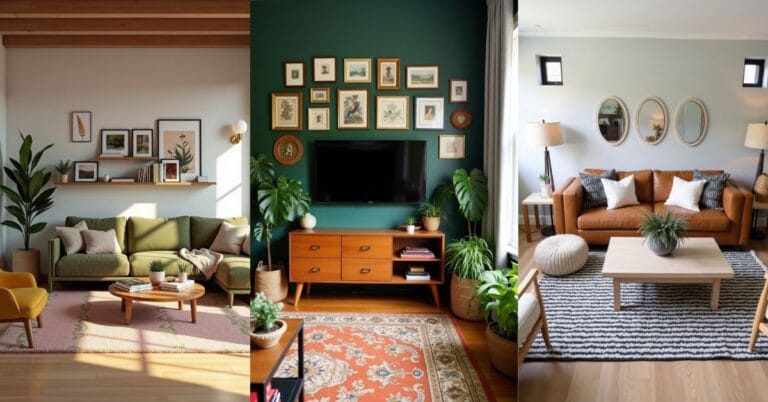How to Decorate a Living Room in 9 Simple Steps That Anyone Can Follow
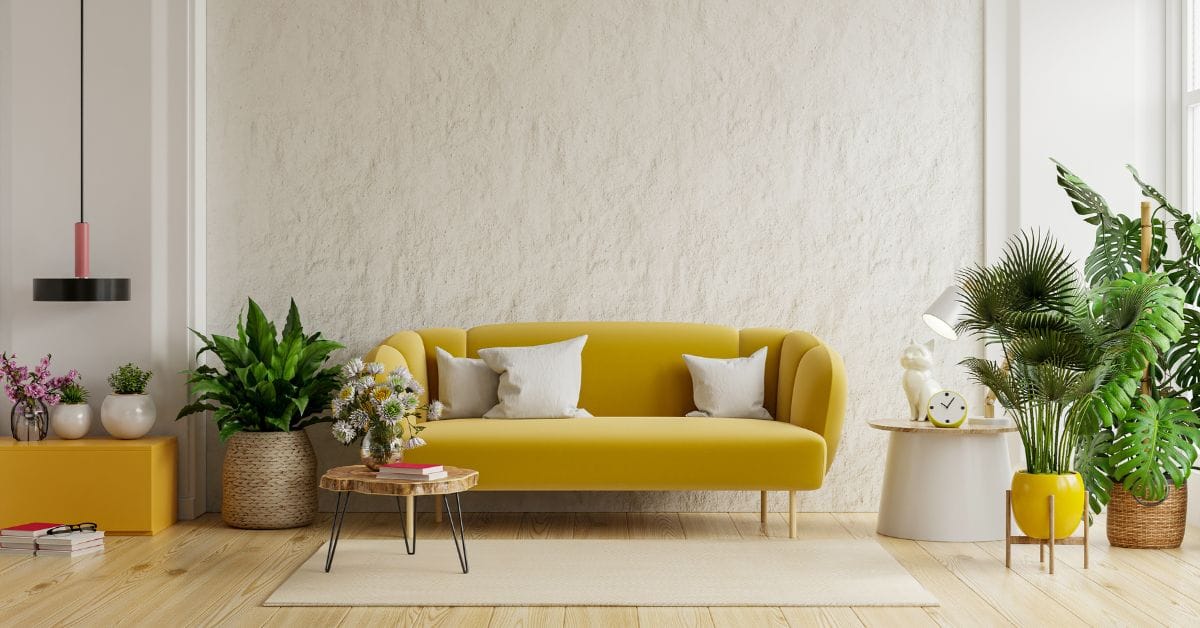
A living room sets the tone for your entire home, whether you realize it or not. It’s where you flop onto the sofa after a long day, gather with friends for game nights, or curl up with your favorite book. But getting that perfect balance between cozy and stylish? That’s the real challenge.
You don’t need a mansion-sized budget or fancy designer skills to make your living room shine. It’s all about the little choices, picking colors that make the space feel alive, arranging furniture so it just clicks, and adding those personal touches that make it yours. This guide will walk you through how to create a living room that feels just right, one decision at a time.
1) Know Your Room Before You Begin
First things first: grab that trusty tape measure. Knowing the size of your living room is a must if you want everything to fit like a glove. Jot down the length, width, and don’t forget those windows, doorways, and quirky built-ins. Trust me, measuring now saves you from the heartbreak of realizing your dream sofa is more Titanic than love seat.
Every living room has its personality. Work with it, not against it. Got a big, bright window? Let it shine. Have a fireplace? That’s your instant focal point. Just make sure you’re not cramming furniture into walkways or blocking light. Nothing kills a vibe faster than a room that feels cluttered.
Oh, and about guessing measurements? Don’t. It’s the decorating version of winging it, and it rarely works out. What looks ‘just right’ in the store can feel completely off once it’s home. Measuring is boring, but fixing mistakes is worse, so get it done.
2) Pick a Color Palette That Works
Choosing the right colors for your living room is more important than you might think. The easiest place to start? Go neutral for the big stuff. Think walls, sofas, or large rugs, keeping these elements neutral gives you a flexible base that won’t clash with future updates.
Now, let’s talk accents. This is where you can have fun. Throw pillows, artwork, or even a quirky side chair are great spots to bring in pops of color. Stick to two or three accent colors for a pulled-together look, too many, and things can get chaotic.
Remember, colors do more than just look pretty. They set the mood. Want the room to feel light and airy? Opt for whites, soft greys, or pale blues. Craving something cozy and intimate? Deeper shades like navy, charcoal, or warm earthy tones work wonders. The key is balance. Let one tone dominate while the others play backup.
When in doubt, grab a few paint samples and see how they look in your space. Light changes everything, so test them during different times of the day. Nothing beats seeing the colors in action before committing to a wall-to-wall decision.
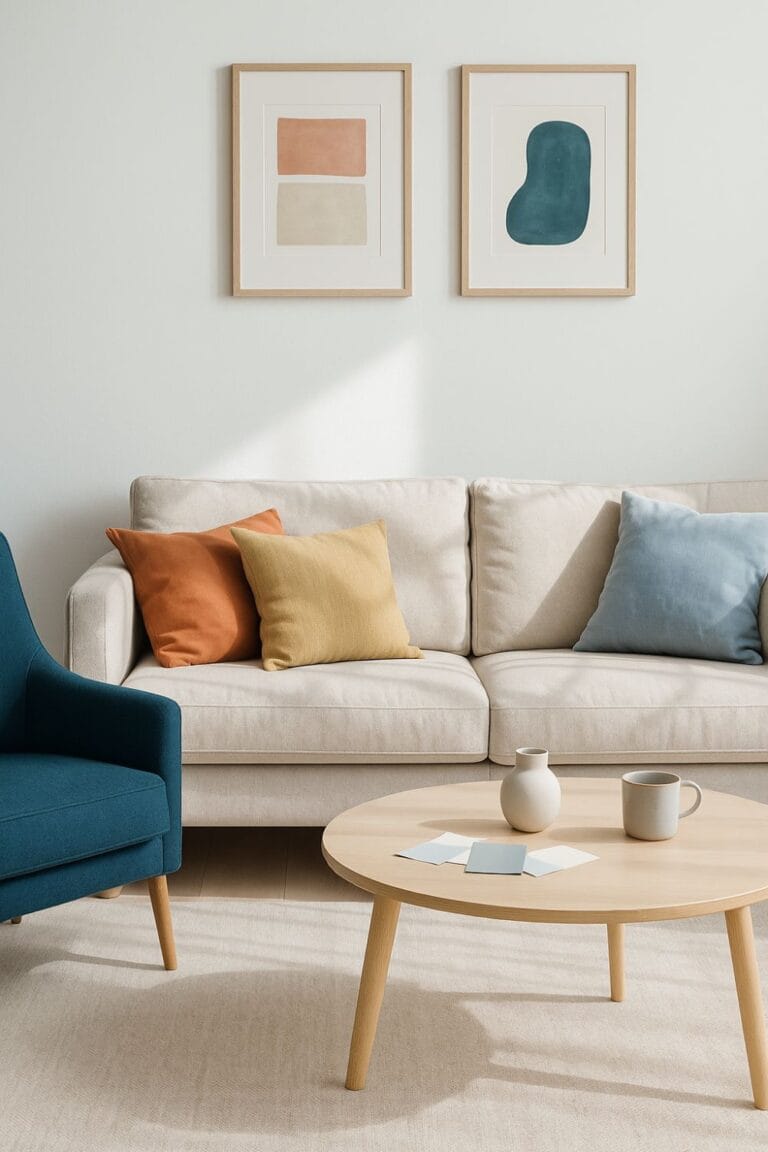
3) Plan Your Furniture Placement
Furniture placement can make or break a living room. Start by identifying a focal point, something that naturally draws the eye. It could be a fireplace, a large window, or even a stunning piece of art. Arrange your seating around this feature to create a sense of balance and purpose. If you’re unsure, a coffee table can work as a subtle yet effective anchor for the space.
Next, think about flow. Walkways are essential for keeping the room functional. Leave at least 2-3 feet of space between furniture pieces to avoid that crowded, “furniture showroom” look. This spacing also ensures people can move around comfortably, whether it’s family members navigating the room or guests mingling during a gathering.
When it comes to furniture, less is often more. That oversized sectional might seem cozy, but it can overwhelm the room if the space doesn’t allow for it. Stick to essential pieces like a sofa, a couple of chairs, and a coffee table. If you have extra room, then layer in smaller items like side tables or a console. Think of it like a puzzle, every piece should fit without cramming everything together.
4) Get the Lighting Right
Lighting can completely change how your living room feels. The secret? Layer your lighting. Start with an overhead fixture for general illumination, think chandeliers, flush mounts, or pendant lights, depending on your style. Then, add task lighting like table lamps or floor lamps near seating areas for reading or cozy evening vibes. Finally, use accent lighting, like wall sconces or spotlights, to highlight art, shelves, or architectural features. Each layer adds depth and helps create a welcoming atmosphere.
If your room has windows, make the most of natural light. Light, sheer curtains or adjustable blinds are perfect for letting in sunshine while still maintaining privacy. Position mirrors strategically to bounce light around the room, making it feel brighter and more spacious. Natural light not only saves on electricity but also enhances the colors and textures in your space.
While overhead lighting is practical, don’t rely on it alone. Harsh, direct light can flatten a room and feel cold. Balance it with softer, warmer sources like lamps or dimmable fixtures to create a more inviting look.
5) Use Patterns and Textures Sparingly
Patterns and textures can bring your living room to life, but the key is to strike the right balance. Mix materials and fabrics like soft throws, leather upholstery, a jute rug, or a glass coffee table to create depth. This variety adds interest without overwhelming the eye.
When using patterns, pair bold designs with neutrals to keep the room from feeling chaotic. For example, a vibrant geometric rug can shine when paired with solid-colored furniture. Layering patterns of different scales, like a large floral print and a smaller stripe, can create a cohesive look that’s visually dynamic yet calming.
Don’t go overboard. Too many textures or competing patterns can make your space feel cluttered and busy. Let one or two elements take center stage while keeping the rest simple and understated.
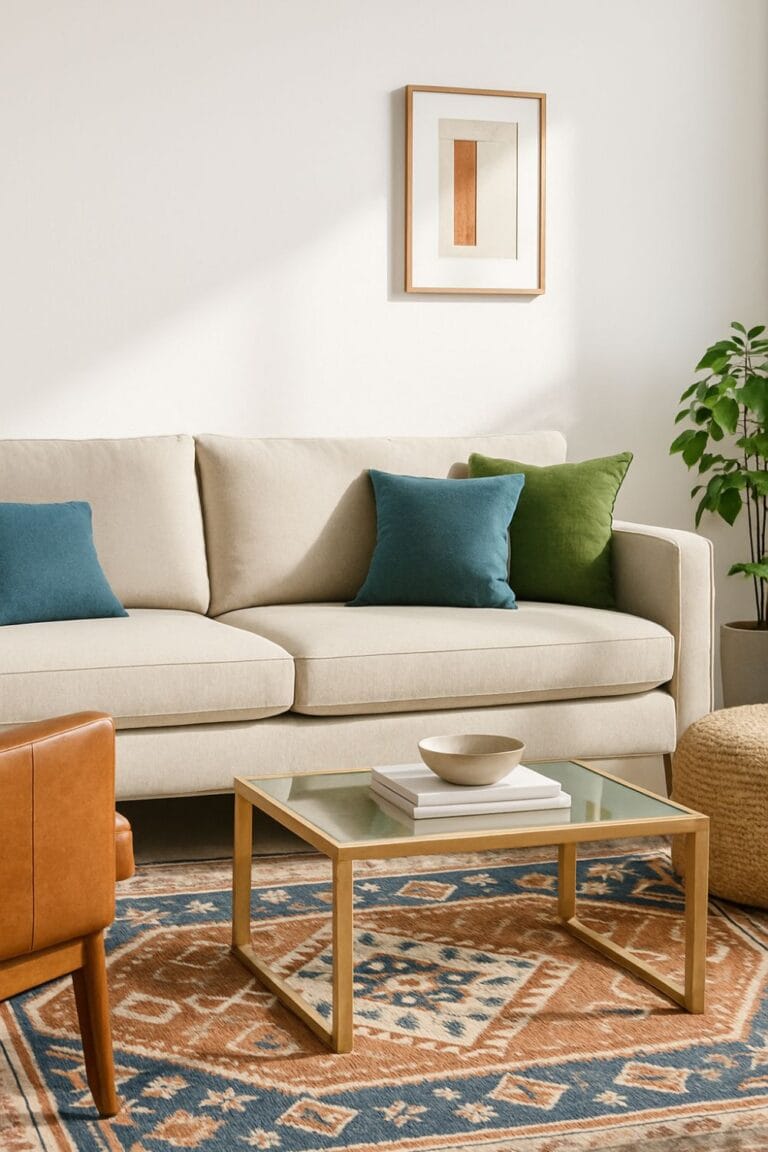
6) Add Accessories That Matter
Accessories are your chance to let personality shine. Start by personalizing the room with items that hold meaning. Family photos, books that reflect your interests, or heirlooms passed down through generations can make the space uniquely yours.
Plants are another great way to breathe life into your living room. A leafy fiddle-leaf fig in the corner or a row of small succulents on a shelf can bring warmth and a natural vibe. If you don’t have a green thumb, opt for low-maintenance options like snake plants or high-quality faux greenery.
While it’s tempting to fill every surface, avoid random clutter. Accessories should feel intentional, whether it’s a beautiful vase on a side table or a curated collection of objects on a shelf. The goal is to add charm and character without turning the room into a catch-all for knick-knacks.
7) Make Small Changes on a Budget
Decorating a living room doesn’t have to break the bank. Sometimes, the best ideas come from working with what you already have. Repurpose existing furniture by giving it a new lease on life with a fresh coat of paint or updated upholstery. A tired coffee table can look brand new with a trendy color or a distressed finish, while reupholstering chairs with modern fabric can instantly refresh the space. Even swapping out hardware on cabinets or drawers can make a surprising difference.
Get creative with DIY projects. Whether it’s crafting a custom piece of wall art, sewing your own throw pillow covers, or building a simple shelving unit, these small personal touches can add character without costing a fortune. If you’re feeling adventurous, try creating a gallery wall with mismatched frames or repurpose old jars into chic vases or storage containers.
Shop smart when looking for deals. Thrift stores, flea markets, and online marketplaces are treasure troves of unique and affordable decor. From vintage lamps to mid-century modern chairs, you can often find high-quality pieces at a fraction of the cost. Clearance sections at home goods stores or seasonal sales are also great opportunities to snag stylish items on a budget.
Rearrange what you already own to create a fresh look. Sometimes, moving a piece of furniture to a different part of the room or swapping decor items between rooms can breathe new life into your space without spending a dime. Decorating doesn’t always mean buying; sometimes, it’s about reimagining what’s already there.
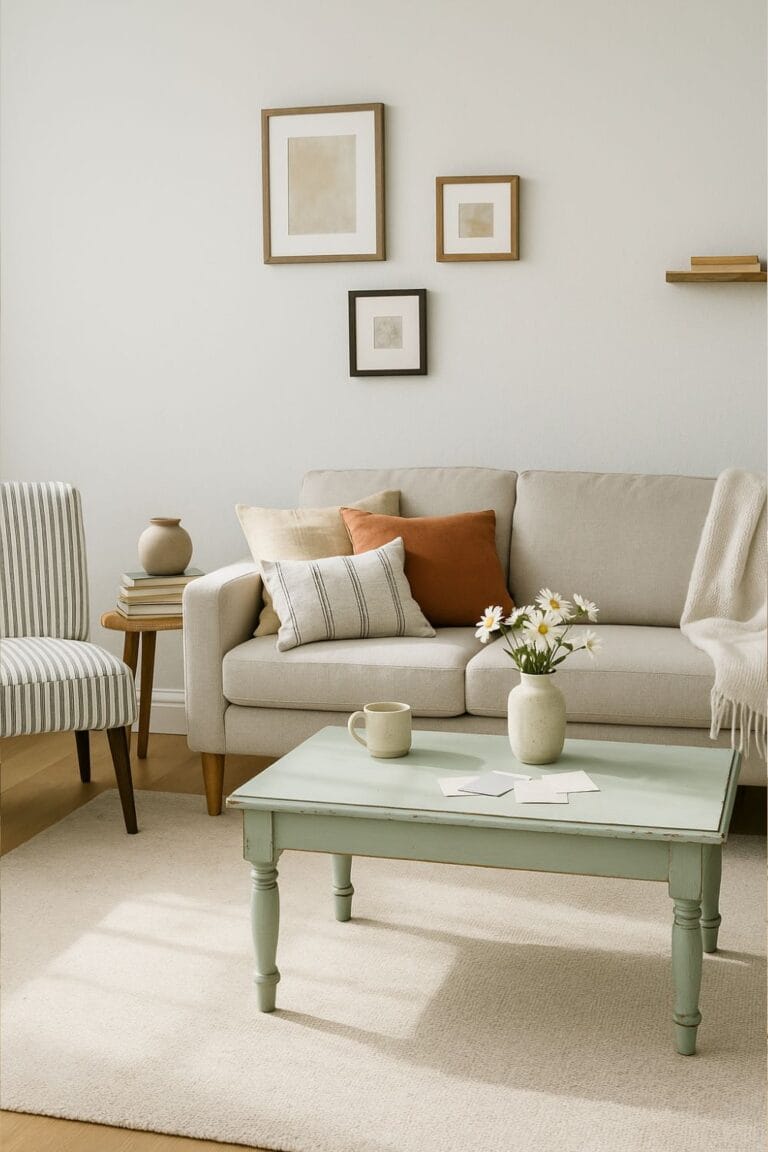
8) Avoid Common Mistakes
Even the most beautifully styled living room can feel off if common missteps aren’t addressed. Here are five of the most common mistakes to watch out for:
9) Stay Balanced with Trends and Timeless Style
Trends are fun, but timeless design wins in the long run. Use trendy pieces sparingly. Think throw pillows, vases, or artwork that can be swapped out easily. For the big-ticket items like sofas or coffee tables, invest in quality staples with neutral colors and classic designs. They’ll stand the test of time and adapt to evolving styles.
Most importantly, don’t follow trends blindly. Choose what works for your space and taste. Your living room should feel personal, not like a copy of the latest Instagram post.
Make It a Room Worth Living In
A great living room doesn’t need to be perfect, it just needs to feel like home. It’s where mismatched pillows tell stories, furniture feels just right, and the lighting fits every mood. There’s no one-size-fits-all formula here, just choices that reflect how you live, relax, and gather.
As you step back and take it all in, remember this: the best spaces aren’t the ones that follow every rule. They’re the ones that feel lived in, loved, and uniquely yours. So rearrange, experiment, and make it a place where you can’t wait to kick off your shoes.


